施工塗佈的效果

殺菌
細菌、病毒都是有機物質,都是ARC-FLASH光觸媒分解的對象。靠著塗佈ARC-FLASH光觸媒於室內的牆壁、天花版及交通工具的內部,大反應面積及長時間作用的結果,便能夠達到有效潔淨環境、消除病媒的效果。ARC-FLASH光觸媒的殺菌能力,經過日本厚生省指定檢查機關的反覆實驗,在台灣,也取得食品工業發展研究所、ITS(全國公正檢驗)、SGS等公正機關的驗證,另外在中國、香港、馬來西亞及新加坡等地,都通過相關檢驗。報告顯示,ARC-FLASH光觸媒的殺菌率,不管是在紫外光或可見光下,都高達99.99%,是至今為止唯一獲得多國認證的光觸媒。
光觸媒再2003年SARS期間,即受總統府採用以防疫,至2009年H1N1期間,更受馬來西亞政府認可,推薦於衛生部及教育部用在防疫,在2014年,為了能讓紊亂的市場有一個官方的認證為依歸,疾病管制署推動了防疫產品推薦計畫,ARC-FLASH光觸媒通過嚴格的國家審核,成為唯一取得疾管署防疫產品推薦計畫的光觸媒業者;2016年防疫產品推薦計畫轉型,移交衛生福利部委由國家生策會執行,成為SNQ國家品質標章,進行更嚴密的品質審查,ARC-FLASH光觸媒通過層層把關,於2018年取得了SNQ防疫類產品的國家品質標章,成為國家認可的防疫產品。
>>>一般家庭.拖兒所.安親班.學校.醫療院所.營業場所.大眾運輸工具.私人交通工具
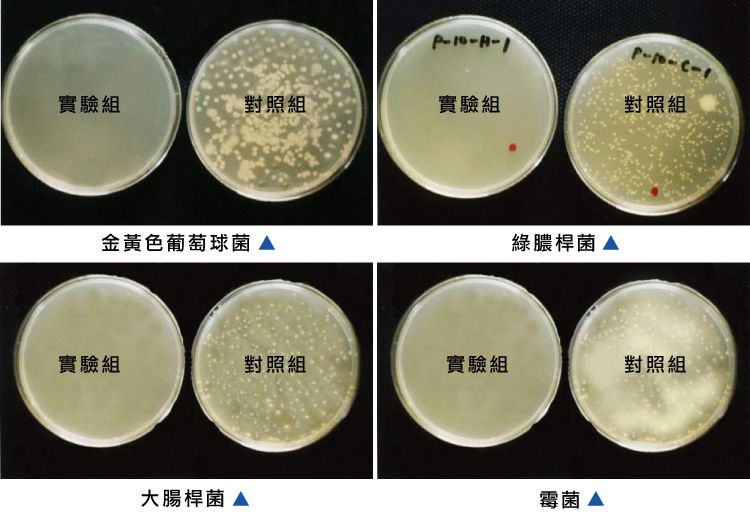
脫臭 ‧ 空氣治理
所有的氣味分子都是有機物質,而ARC-FLASH光觸媒與空氣中的水結合後,產生的氫氧自由基,較臭氧有更強的氧化能力,可強力分解臭源,使用在氣味較重的公共廁所,吸煙室等環境,可明顯消除臭味。此外,ARC-FLASH光觸媒可以有效分解香煙燃燒所產生的致癌物質如硫化氫,二氧化硫等,不僅可以維持空氣的清新,還可以還給拒吸二手煙的人一個健康的生活空間,給尚在發育中的孩童一個更好的成長環境。
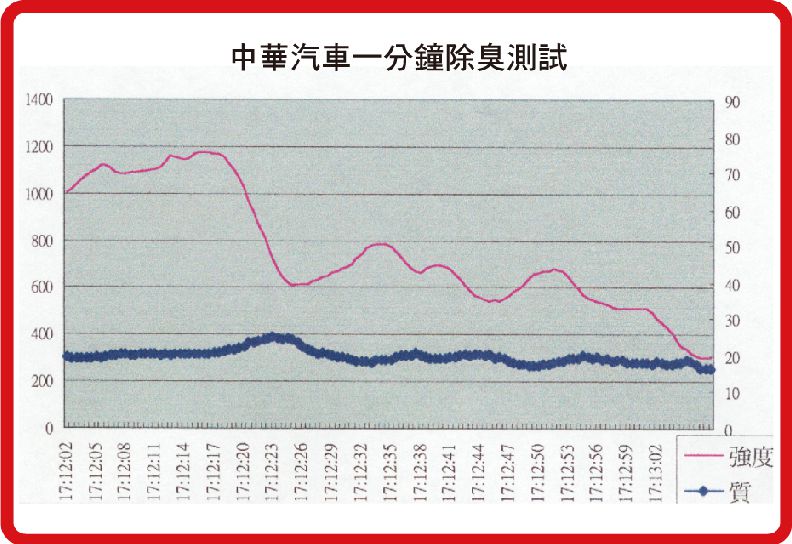
將ARC-FLASH光觸媒施作在車室空間內後,以氣味偵測機檢測,每三秒採樣一次,可以明顯看到氣味值在一分鐘內,從強度1200降低至強度20,在ARC-FLASH光觸媒的作用樣,非常有效的去除了氣味。
在除臭的應用上,除了可將光觸媒應用施作於整體環境空間,用以大面積的分解氣味外,也可以應用於室內空氣治理。
自2009年政府制定了室內空氣品質管理法後,大眾對於室內空氣品質有了較明確的認知,因為裝潢或加工材料產生的甲醛、乙醛、甲苯、二甲苯、乙酸丁酯、氨等統稱為揮發性有機氣體的有毒物質,會再裝潢材料中長期散發達二十年,是人身健康的隱形殺手,這些微量物質因為持續散發,所以不論是通風、用材料吸附或是使用機器去除,都沒有辦法有效解決,而ARC-FLASH光觸媒可以再光照下持續作用,有效的分解甲醛、苯、氨等有毒物質,讓新裝潢屋的致癌風險降到最低。
自淨
ARC-FLASH光觸媒的自淨功能,讓污垢不易附著。在日本,許多建築物外牆都已施作ARC-FLASH光觸媒,以此定期清潔建築物外牆的保養支出。日本甚至有許多高速道路兩旁的隔音牆都經過光觸媒的塗佈,除了藉著ARC-FLASH光觸媒的自淨能力來保持清潔外,大面積塗佈的光觸媒,可以有效分解空氣中的氮氧化物,發揮大氣淨化的效果。
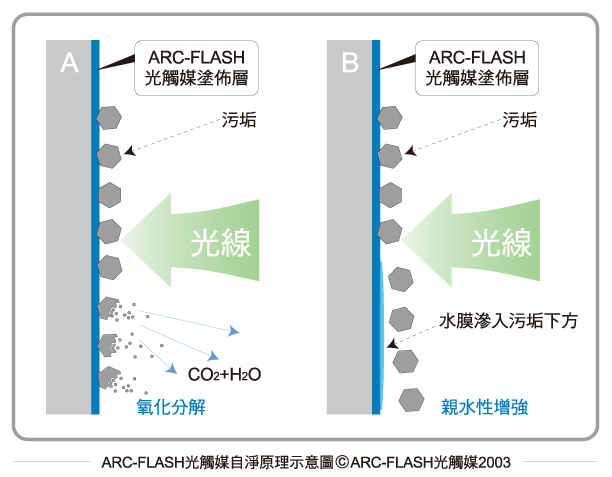
ARC-FLASH光觸媒的氧化分解能力能將細微污垢分解為二氧化碳及水(如上圖),此外超親水特性會讓空氣中的水分子形成水膜,滲入污垢下方,污垢便因無法附著而掉落,因此能夠保持物體表面的乾淨。
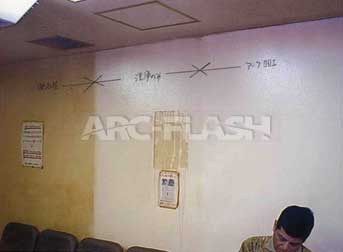
日本國立仙台醫院的吸煙室牆面以ARC-FLASH光觸媒施工,經過30天後的照片:
A. 未經任何施工的牆面
B. 經過清洗後30日
C. 以ARC-FLASH光觸媒標準程序施工後30日
很明顯,經過ARC-FLASH光觸媒施工後的牆面(C區)保持非常清潔的狀態,而僅經過清洗的牆面(B區)則又開始有煙垢附著上去。
防霉
物體表面發霉是因為孳生黴菌的關係,尤其在台灣,室內的衣櫥及牆壁更容易因為潮濕的氣候而發霉。ARC-FLASH光觸媒超強的殺菌能力,可杜絕黴菌繁殖的空間,不但解決了發霉的問題,也去除了討厭的霉味。
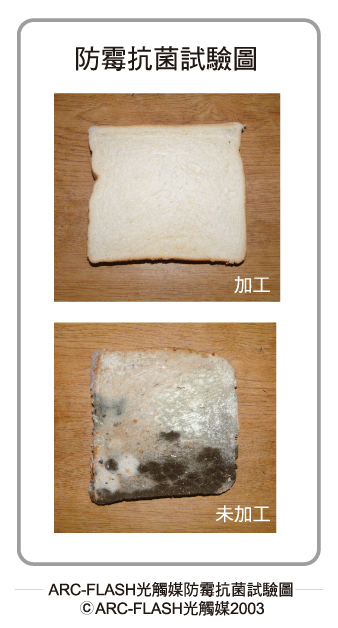
將兩片吐司麵包分別用有經過ARC-FLASH光觸媒加工的布和未加工的布包裹,並列放在同一室內環境下,十天後觀察變化。結果發現用經過加工的布包裹的麵包上沒有任何黴菌孳生,證明了ARC-FLASH光觸媒能有效抑制線狀菌生成。
無毒
ARC-FLASH光觸媒的主要原料是二氧化鈦,而二氧化鈦穩定性非常高,經美國食品藥物管理局(F.D.A)認可,准許作為食品添加劑,市面上許多食品就有添加二氧化鈦。而二氧化鈦更廣泛應用於化粧品及防曬用品中,對人體是十分安全且無副作用的。 ARC-FLASH光觸媒符合歐盟RoHS標準,經過SGS檢驗,不含六大重金屬,也通過日本厚生省指定檢查機關的無毒性測試,經ITS檢驗,符合美國聯邦有害物質管理法規,對皮膚沒有刺激性。
光觸媒在作用中對人體一樣是無害的,光觸媒與空氣中的水跟氧接觸後,會將水跟氧轉換為負氧離子及氫氧自由基,再藉由前述兩物質去分解空氣中的有機物,而經東京大學發表的學術論文顯示,負氧離子及氫氧自由基僅會在光觸媒表面生成,不會散逸到空氣之中,人體沒有吸入之虞,當然也不會對人體產生任何影響。
永久性
光觸媒經過光照會產生氧化還原反應,透過電子跟電洞,轉換空氣中的水跟氧為負氧離子跟氫氧自由基,在藉由這兩項物質去分解有機物。轉換完成後電子跟電洞會回到原來的位置,等待下一次與水跟氧結合。所以光觸媒自己不會參加反應。這個特性可以類比為鐵會導電的特性一般,是不會因為反應次數的增加而效能衰退,也不會因為反應時間增加而耗損,所以光觸媒只要還在基材表面,其效果是持續性的。
ARC-FLASH光觸媒一經施工後即不再溶於水,並在30秒內直接乾燥固化,經過最長十至十四日後,會到達最大硬度4H,比汽車烤漆還要再硬一級,如不刻意磨損(如用菜瓜步或鋼刷等去刷)或以他物覆蓋(如重新油漆),是不會剝落的,也就是說,在不刻意破壞的情況下ARC-FLASH光觸媒將會持續發揮效用。
